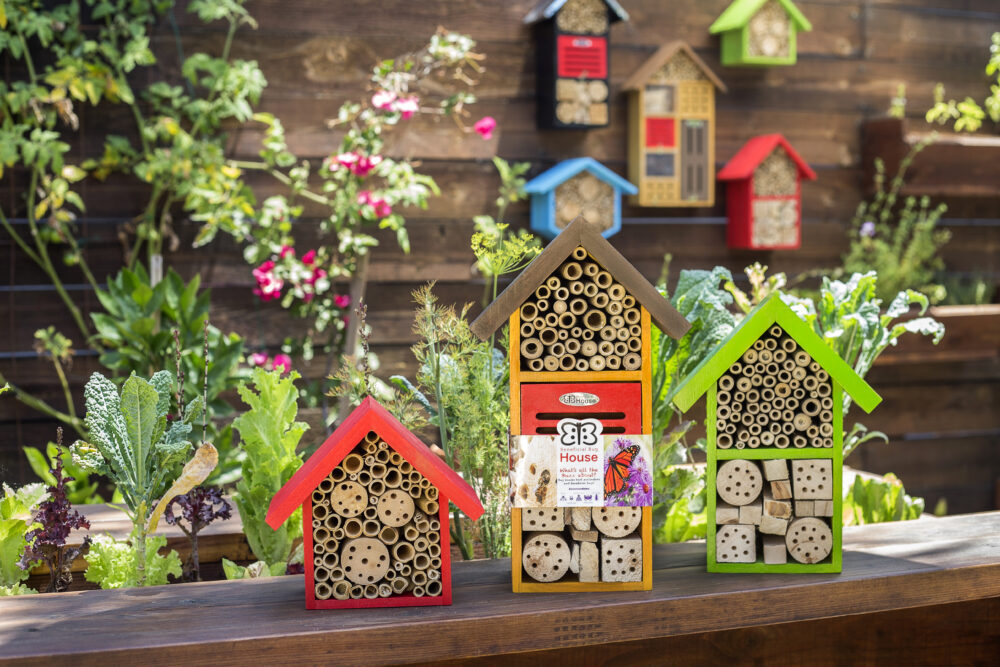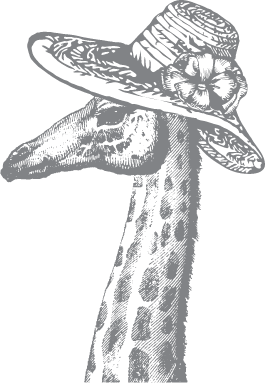Diving Deeper into the SuperMoss Beneficial Bug House
With Beneficial Bug Houses, you can welcome bees and other pollinators into your own backyard. But what exactly about our Beneficial Bug House makes it a desirable place for a solitary bee to inhabit?
Let’s dive into the design components of a Bee House:
Nesting tubes
May solitary bees, particularly mason bees, require nesting tubes. This is a feature that can be found in each of our Beneficial Bug Houses. Be sure to clean and replace nesting tubes in order to prevent disease.
For more information about nesting tubes and mason bees, please see this article.
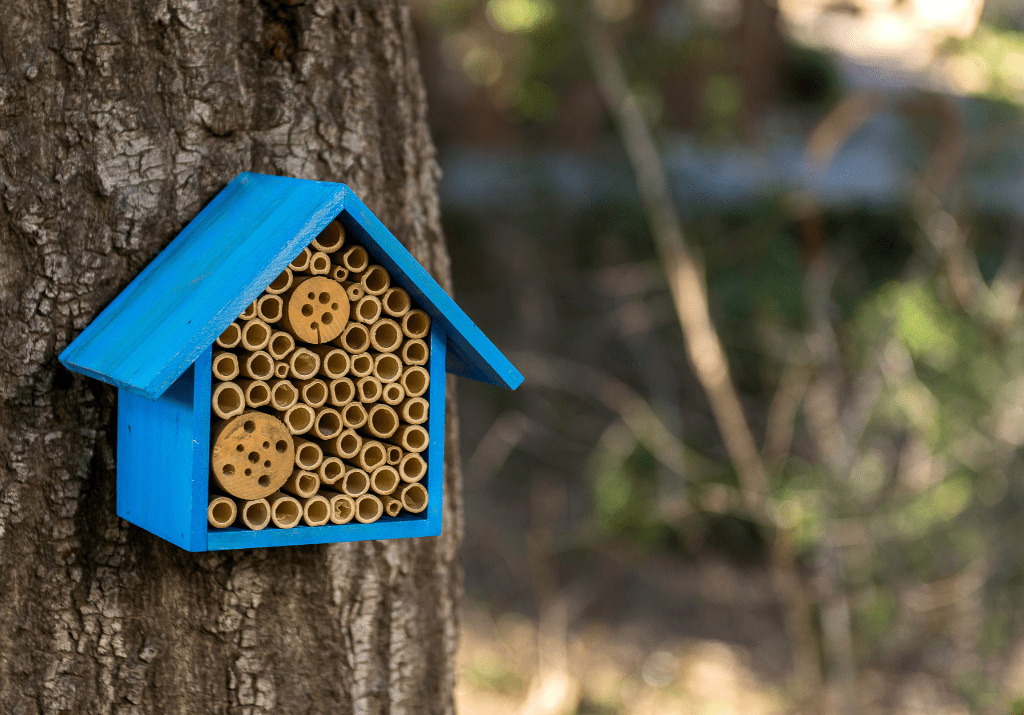
Drilled Wood Holes
Drilled wood spots are a component that we included in each of our Beneficial Bug Houses. We confirmed that “bees actually prefer to nest in natural cavities in wood or stone” (AgriLife Extension). It’s important to have drilled holes of varying sizes, so you can host a range of bee species.
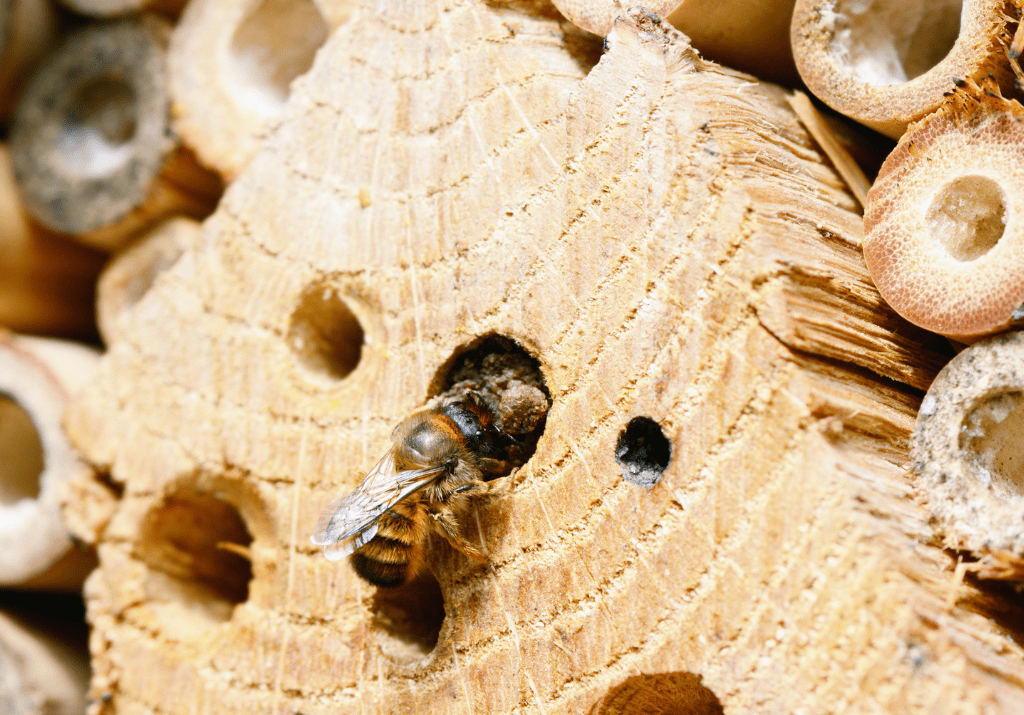
Breathable Materials
This is one of the most important parts of your Bee House. Moisture stuck in the interior of your Bee House can unfortunately lead to death. Consider finding a Bee House with porous materials, made of cardboard and containing hollow components for maximum breathability.
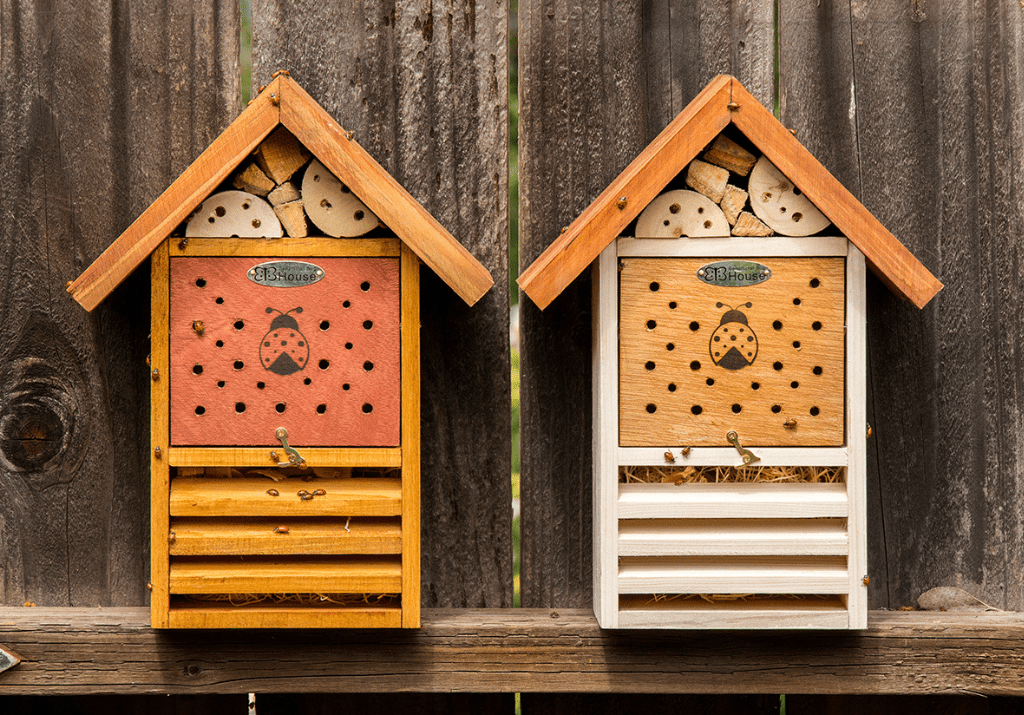
Block System
Many Bug Houses incorporate a block system. This is an alternative to nesting tubes. The slots in between the blocks provide an ideal nesting site for mason bees. An advantage to this design is that it makes the cleaning process easier.
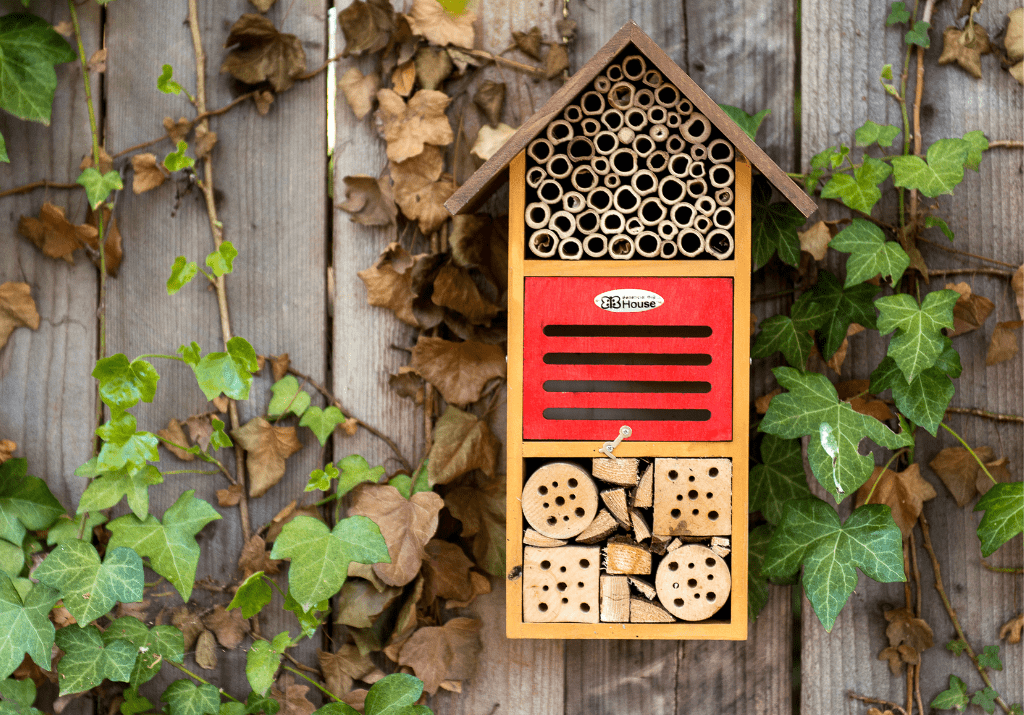 A Secure Roof
A Secure Roof
One of the benefits of buying a Beneficial Bug House is that it provides the shelter native bees need during nesting. These roofed Bee Houses protect from harsh weather, such as wind and rain.
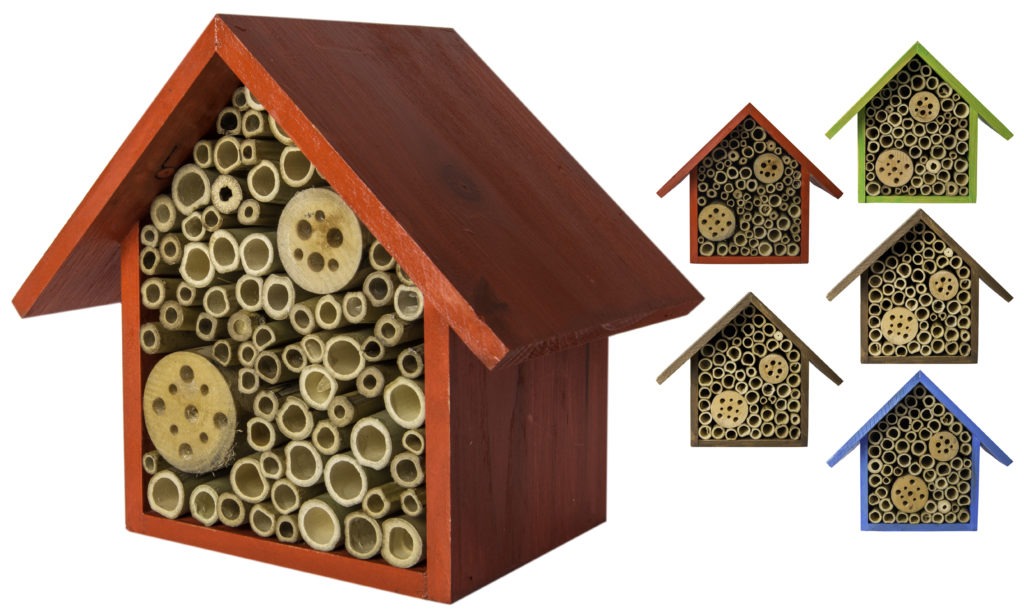
Ensure the setup is correct
Make sure your Bee House is placed in a location that receives ideal sun exposure. However, be sure to keep it from being exposed to harsh afternoon sunlight.
An ideal Bee House site would be south or southeast facing and just about 3 to 6 feet off the ground, says Bee Research Brooke Edmunds of Oregon State University.



